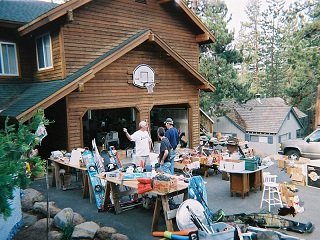 I’ll be the first to admit that, when it comes to gear for the trail, to say that some items are expensive is a bit of an understatement. This is no problem if you’re fortunate enough to be able to afford it without worrying about your finances, or if you use it enough to make it worth it, but what about the vast majority of people who like to camp, but simply don’t do it enough to warrant spending $400 on a quality sleeping bag? This is where used gear comes in. Several people have asked me if I think buying used gear is a good idea. We’ll break down my responses and advice regarding this question today, so keep reading to learn more.
I’ll be the first to admit that, when it comes to gear for the trail, to say that some items are expensive is a bit of an understatement. This is no problem if you’re fortunate enough to be able to afford it without worrying about your finances, or if you use it enough to make it worth it, but what about the vast majority of people who like to camp, but simply don’t do it enough to warrant spending $400 on a quality sleeping bag? This is where used gear comes in. Several people have asked me if I think buying used gear is a good idea. We’ll break down my responses and advice regarding this question today, so keep reading to learn more.
Used gear can be tricky, mainly due to the fact that, unless you’re able to touch it with your own hands to give it the once-over, you’re relying a lot on a description or a photo. Obviously, you don’t want to commit to buying anything, especially outdoor gear, until you have the chance to inspect it for yourself, but how do you get to that point? Start by having a solid idea of the exact gear you need. For instance, don’t surf online classified listings for any and every piece of outdoor gear (unless you have the cash to blow and are just interested in browsing). Instead, know what you want—a backpack, perhaps—and narrow your search.
It’s very helpful when sellers provide photos with their listing, but you won’t always have that fortune. Look for detailed descriptions and if you have questions or want to see photos, contact the seller. Try to obtain photos of specific areas where you know general wear and tear occur—zippers, straps, etc. Some components, if damaged, can be easily repaired or replaced—zipper pulls, for example—but others will render the gear virtually unusable. Keep a price range in mind and when you find one or two items for sale, compare their condition and price to that of a new item and make that call. Sometimes it’s worth it, other times it isn’t.
Another venue through which to obtain used gear is REI’s Garage Sale. These events are held several times throughout the year—dates are posted in the stores and on each store’s website—and feature gear that customers have returned, usually repaired and accompanied by a description of the damage/repair. The biggest of these sales is the post-Christmas one. This one is usually the most popular and people will camp out overnight to grab deals. You can find rare gems at REI’s Garage Sales, but they’re only open to REI members, so if you live near a store, it’s smart to pay the one-time $20 membership fee and take advantage of the used gear sales, as well as the dividend you receive each year.
Traditional garage sales can hold trail-worthy treasures, as well, so check online or the local paper for upcoming sales in your neck of the woods. You never know what you may find. Finally, military surplus stores carry a variety of military-grade equipment that can be useful when camping. I know someone who was recently discharged on disability and has several like-new backpacks that she’s selling for less than half of their retail price, so you never know what you may stumble upon.
Used gear, if in good enough condition, can be just as good as a full-priced, brand new item. Know what you’re looking for and how much you’re willing to spend when determining if used is better than new in a given instance, and you’ll be on a good start to restocking your gear.








